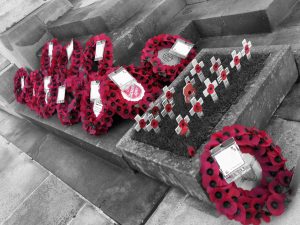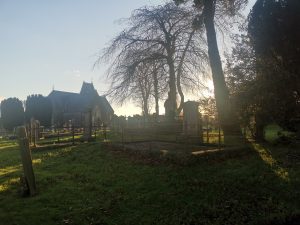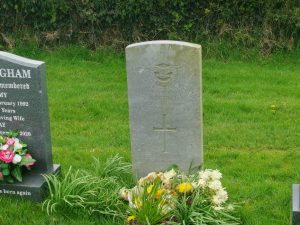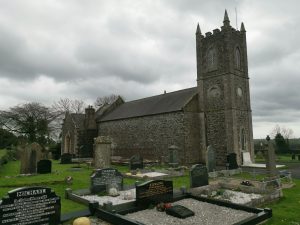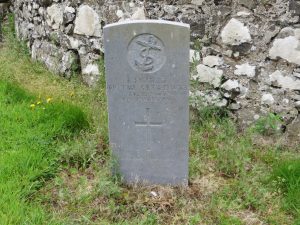McGrath, H (Henry)

McGrath, H (Henry)
Trooper Henry McGrath was from 21 Dunlop Street, Coleraine. He died in the presence of his brother James at 44 Killowen street, Coleraine from tuberculosis,[1] he served with the North Irish Horse.
Up until a year before the Second World War broke out the North Irish Horse was a one-man regiment. Due to threat of Nazi Germany the British government decided to increase its available army size and it would be based in Enniskillen, Northern Ireland. At the end of August 1939, the regiment started the process of becoming a wheeled armoured car unit, initially being equipped with vintage Rolls-Royce armoured cars from the 1920’s fitted with Vickers machine guns.
Training began as the recruit levels increased, this though was interrupted on the 24th of May 1940 when the IRA[2] placed a bomb close to the officer’s mess, which was located on Main Street Enniskillen. The regiment then moved to Portrush on the north coast to avoid any further attacks.
The North Irish Horse would remain in Northern Ireland for the rest of the year, finally handing in their vintage vehicles during April 1941 after moving to Abercorn Barracks at Ballykinlar where they were equipped with Valentine tanks[3]. The regiment then left the island of Ireland and moved to Wiltshire and were equipped with Churchill[4] tanks.
It was not until February 1943 that the regiment would be involved in the war. On the 2nd they landed in North Africa and by the end of the month they were involved in repelling an Axis offensive during Operation Ochsenkopf.[5] This would accumulate in the final defeat of the Axis powers in Tunisia, North Africa, and the capture of more than 250,000 troops, three months later. The men where now allowed to rest and regroup before being sent to Italy a year later.
The battalion landed in Naples on the 18th of April 1944, their transport ships were attacked on entering the harbour. They then moved onto an area close to Monte Cassino, which had fallen some days earlier along with the rest of the defensive Gustav Line.
The regiment then moved on to take part in Operation Chesterfield, which was an assault on the Germans next line of defence, aptly name the Hitler Line,[6] it lay just six miles north. The assault on the line was successful but the North Irish Horse suffered greatly, losing 36 men killed in action and 32 tanks lost. They were soon withdrawn and allowed to rest, reequip with the latest Churchill tanks, and regroup.
Soon the regiment was back in action, pushing north, it would be involved in several skirmishes and battles before being ordered to stand down after crossing the River Po in Northern Italy on the 28th of April 1945. The German forces in Italy surrendered two days later. Although they did not know it, the North Irish Horse’s war was over. They had lost 78 men and had proven their bravery many times.
The regiment was disbanded during January 1946 from the regular army. A year later being reformed as a Territorial regiment in the army.
Date of Death: 19/09/1947
Service: Trooper, North Irish Horse, Royal Armoured Corps
Service Number: 7903748
Burial Location: Near North boundary.
[1] Tuberculosis (TB) is an infection of the lung, which leads to wasting away of the body.
[2] The IRA is the Irish Republican Army. An extreme left illegal organisation based in Ireland and Northern Ireland that collaborated with Nazi Germany. The IRA declared war against Britain during January 1939 and in return the Irish government introduced an Emergency Powers Bill to reinstate internment, and executions for IRA members.
[3] The Valentine tank was a lightweight infantry support tank that first went into service during 1940 and would be produced until 1944. The last tank to see service was during 1960. It had a crew of 3 or 4 men. Only the later versions had 4.
[4] The Churchill tank was a heavy infantry support tank that first went into service during 1941 and would be produced until 1945. The last tank to see service was during 1955. It had a crew of 5 men.
[5] Operation Ochsenkopf was an offensive operation in Tunisia from 26 February to 4 March 1943.
[6] Hitler Line was renamed the Senger Line by the Germans in honour of General von Senger und Etterlin.
